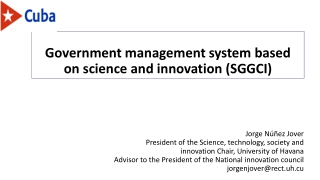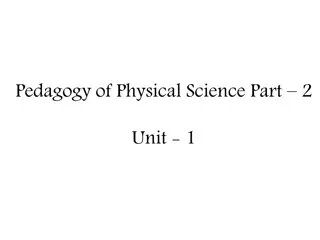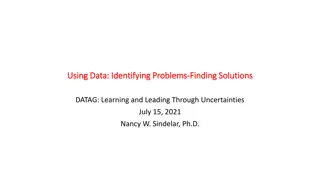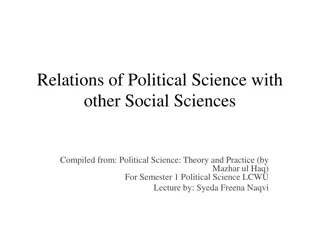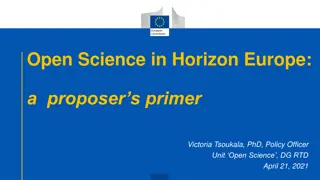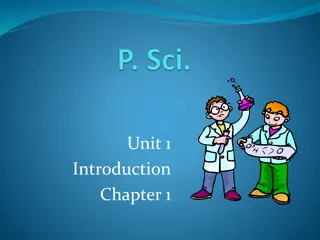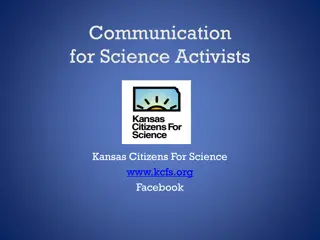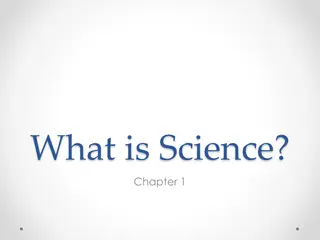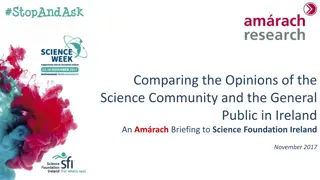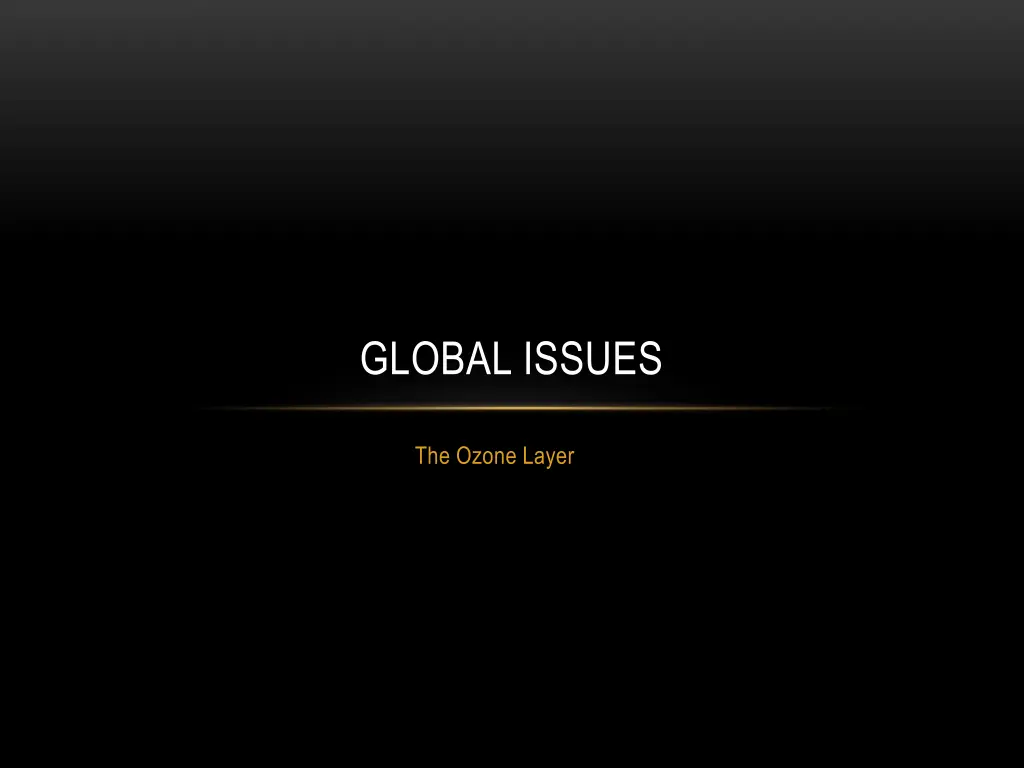
Understanding Ozone Layer Depletion and Its Causes
Explore the significance of ozone, its role in the atmosphere, and the damaging effects of ozone-depleting substances like chlorofluorocarbons (CFCs) and nitrogen oxides. Learn how human activities impact the ozone layer and contribute to environmental issues. Discover common ozone-depleting gases and the processes involved in ozone destruction. Stay informed about the importance of preserving the ozone layer for the health of our planet.
Download Presentation

Please find below an Image/Link to download the presentation.
The content on the website is provided AS IS for your information and personal use only. It may not be sold, licensed, or shared on other websites without obtaining consent from the author. If you encounter any issues during the download, it is possible that the publisher has removed the file from their server.
You are allowed to download the files provided on this website for personal or commercial use, subject to the condition that they are used lawfully. All files are the property of their respective owners.
The content on the website is provided AS IS for your information and personal use only. It may not be sold, licensed, or shared on other websites without obtaining consent from the author.
E N D
Presentation Transcript
GLOBAL ISSUES The Ozone Layer
WHAT IS OZONE? Ozone is a gas that occurs naturally in the stratosphere at about 20 to 30 kilometres above the Earth s surface. When people refer to oxygen, they usually mean the oxygen we use when we breathe. This type of oxygen, O2, consists of molecules each made of two oxygen atoms. Ozone, O3, is another naturally occurring form of oxygen, the molecules being made of three oxygen atoms. Ozone is a colourless gas that has a very pungent odour. Although ozone performs a vital role in the stratosphere, at ground level it is a pollutant. It is poisonous, causing eye, nose and throat irritation and lung damage, and has even been found to cause asthma.
THE OZONE LAYER Ozone is created when UV light splits oxygen molecules in the stratosphere into single oxygen atoms. These single oxygen atoms then join other oxygen molecules to form triplets of oxygen atoms, or ozone molecules. O2 + O O3 Ultraviolet light also splits ozone molecules, so ozone is continually being created and destroyed, with UV light being absorbed in the process. The region of the stratosphere in which ozone is thinly distributed is called the ozone layer.
CHLOROFLUOROCARBONS Chlorofluorocarbons (CFCs) were invented in the 1920s and were once called wonder chemicals because they were non-poisonous, odourless, stable and cheap to produce. Until recently they were used extensively as propellants for aerosol sprays and as coolant gases in refrigerators and air conditioners. They also made the bubbles within polystyrene and other foam packaging. We now know that CFCs are greenhouse gases and can destroy ozone. They do this by drifting upwards into the stratosphere where they break down, releasing chlorine. Each chlorine molecule released this way reacts with ozone molecules, breaking them apart into oxygen molecules and oxygen atoms. The chlorine acts as a catalyst and is not part of any new substance formed. It is then free to go on and destroy more ozone molecules!
Common ozone-depleting gases and their average life in the atmosphere Gas Chemical Formulae Average life in atmosphere (years) 65 110 160 110 130 11 CFC 11 CFC 12 CFC 13 Freon (Halon 1301) Nitrous oxide Methane CCl3F CCl2F2 CClF3 CF3Br N2O CH4
OTHER OZONE ATTACKERS CFCs are not the only ozone destroyers. Nitrogen oxides also speed up ozone destruction. These gases are produced when jet aircraft engines burn fuel. Supersonic aircraft fly higher and inject these gases directly into the stratosphere. The space shuttle releases ozone-attacking hydrogen chloride when its boosters fire during launch. Each launch releases 68 tonnes of hydrogen chloride gas (gaseous hydrochloric acid!) into the atmosphere. Volcanoes also release hydrogen chloride. Lightning causes reactions that split ozone molecules.
THE HOLE STORY The thickness of the ozone layer is measured in Dobson units or DU. Remember that the ozone is spread throughout a region of the stratosphere, so the term thickness is somewhat misleading. In considering ozone layer thickness , we imagine all the ozone brought down to ground level and concentrated into a pure ozone layer. One hundred Dobson units correspond to a layer of pure ozone one millimetre thick at ground level. Remote-sensing satellites collect data on the amount of ozone in the stratosphere. If all the ozone molecules in the ozone layer were brought to ground level, it would form a layer averaging only 500 DU (5 mm) thick.
A value of less than 220 DU is considered to be an ozone hole. The ozone hole situated over Antarctica was discovered by British scientist Dr Joseph Farman in 1985. The Antarctic ozone hole appears at around the end of winter in August each year, and is most pronounced by the end of October, when the day breaks after the Antarctic winter. At this time chlorine is very effective at breaking down ozone molecules. In November, winds carry ozone-rich air from other regions over the Antarctic, repairing the hole, but leaving lower ozone levels over Australia and New Zealand.
THE FUTURE One hundred nations agreed in the Montreal Protocol of 1987 to either stop manufacture of, or limit their use of, CFCs by 2000 or earlier. Despite most nations honouring their commitment to the protocol, levels of CFCs in the atmosphere are still rising, as it takes 10 years or more for them to reach the ozone layer. Unfortunately, many developing countries still use CFCs as they are cheap and easy to make. It is expected that ozone levels will return to normal by 2045. Already there is some evidence that the reduction in the use of CFCs is starting to have an effect. Recent monitoring has indicated that the ozone hole is now not as big as the record hole in September 2000. It is hoped that international cooperation to repair the damage is working. Only time will tell the whole story. Meanwhile, apply that sunscreen!


